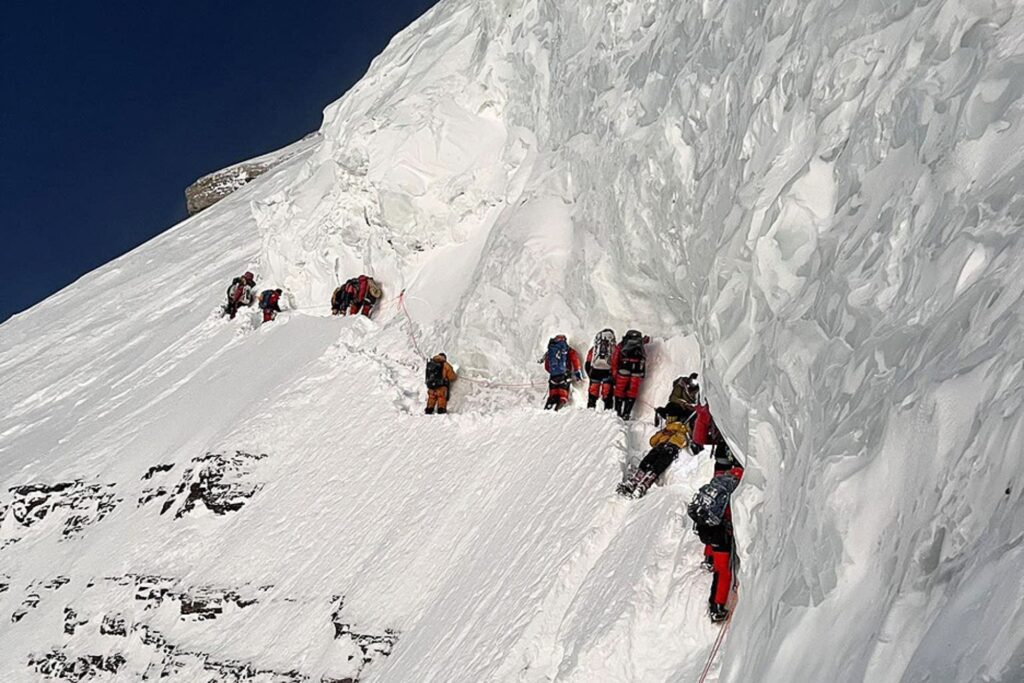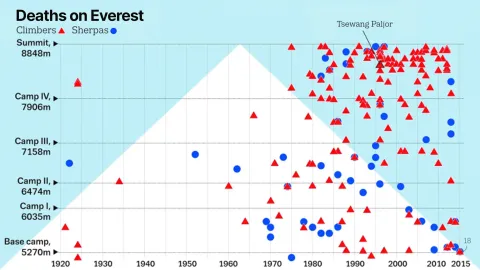Introduction
K2, the second highest mountain in the world, is renowned not only for its towering height of 8,611 meters (28,251 feet) but also for its extreme difficulty and perilous conditions. Among the many challenges that climbers face on their ascent, the K2 Bottleneck stands out as one of the most formidable obstacles. This narrow, steep section of the mountain, located just below the summit, has become infamous in the climbing community for its treacherous conditions and high risk of avalanches. In this article, we will explore the K2 Bottleneck, its significance in the context of climbing K2, the dangers it presents, historical incidents, and strategies for climbers to navigate this critical section safely.
What is the K2 Bottleneck?
The K2 Bottleneck is a narrow, steep passage situated at approximately 8,200 meters (26,900 feet) on the Abruzzi Spur route, which is the most commonly used route for summiting K2. This section is characterized by a steep, icy slope that climbers must navigate carefully. The Bottleneck is particularly notorious due to its exposure to avalanches and rockfall, making it one of the most dangerous sections of the climb.

Table 1: Key Features of the K2 Bottleneck
| Feature | Description |
|---|---|
| Location | Approximately 8,200 meters (26,900 feet) |
| Terrain | Steep, icy, and narrow passage |
| Risks | Avalanches, rockfall, and extreme weather conditions |
| Climbing Difficulty | Extremely high due to altitude and technical challenges |
The Significance of the K2 Bottleneck
The K2 Bottleneck is critical to the overall climbing experience for several reasons:
- Strategic Importance: Successfully navigating the Bottleneck is essential for climbers aiming to reach the summit of K2. It serves as a gateway to the final push to the top.
- Timing: Due to the high risk of avalanches, climbers must time their ascent through the Bottleneck carefully, often waiting for optimal weather conditions. This can lead to delays and increased pressure on climbers.
- Physical and Mental Challenge: The Bottleneck tests climbers’ physical endurance and mental fortitude. The high altitude, combined with the technical nature of the climb, can be overwhelming.
Climbing Timeline for K2

Dangers Associated with the K2 Bottleneck
The K2 Bottleneck is fraught with dangers that climbers must be aware of:
- Avalanches: The steep, icy terrain is prone to avalanches, especially after fresh snowfall or during warmer weather. Climbers must be vigilant and prepared to respond quickly to changing conditions.
- Rockfall: The Bottleneck is located beneath steep rock faces, making it susceptible to rockfall. Loose rocks can be dislodged by climbers above, posing a serious threat to those below.
- Altitude Sickness: At such high altitudes, climbers are at risk of altitude sickness, which can impair judgment and physical capabilities. Proper adaptation is essential to mitigate this risk.
- Weather Conditions: The weather on K2 can change rapidly, and climbers must be prepared for extreme conditions, including high winds, freezing temperatures, and sudden storms.
Table 2: Dangers of the K2 Bottleneck
| Danger | Description | Mitigation Strategies |
|---|---|---|
| Avalanches | High risk of snow slides in steep terrain | Monitor weather, choose optimal timing |
| Rockfall | Falling rocks from above can be deadly | Maintain awareness, avoid lingering |
| Altitude Sickness | Impaired judgment and physical capabilities | Acclimatize properly, descend if symptoms arise |
| Weather Conditions | Rapid changes can create dangerous situations | Stay informed, be prepared to retreat |
Historical Incidents at the K2 Bottleneck
The K2 Bottleneck has witnessed several tragic incidents over the years, highlighting the extreme dangers associated with climbing this mountain. Some notable events include:
1. The 2008 K2 Disaster
One of the most infamous incidents occurred in August 2008, during a summer climbing season that turned deadly. A group of climbers from various expeditions faced severe weather conditions that led to a series of tragedies. As climbers attempted to navigate the Bottleneck, a sudden storm hit, causing multiple climbers to become stranded.
- Fatalities: Eleven climbers died during this season, with many of the deaths occurring in the Bottleneck.
2. The 2013 Avalanche
On July 26, 2013, a massive avalanche swept through the Bottleneck, killing two climbers and injuring several others. The incident highlighted the unpredictability of avalanches in this region.
- Fatalities: Two climbers died in the avalanche.
3. The 2019 Climbing Season
During the 2019 climbing season, multiple incidents occurred in the Bottleneck, resulting in several fatalities.
- Fatalities: Seven climbers died during this season, with many of the deaths occurring in the Bottleneck.
Death Rate and Statistics
The K2 Bottleneck is notorious for its high death rate. According to various sources, the death rate for climbers attempting to summit K2 via the Abruzzi Spur route is approximately 25%. This translates to one death for every four climbers who attempt to reach the summit.
Death Rate and Statistics for K2 Bottleneck
| Category | Statistics |
|---|---|
| Death Rate | 25% (approximate) |
| Fatalities | Over 80 climbers have died on K2 since 1939 |
| Climbing Attempts | Over 300 climbers attempt to summit K2 annually |
Strategies for Navigating the K2 Bottleneck
Climbers attempting K2 must have a well-thought-out strategy for navigating the Bottleneck. Here are some key strategies:
- Acclimatization: Proper acclimatization is crucial for minimizing the risk of altitude sickness. Climbers should spend adequate time at base camps and higher camps to allow their bodies to adjust.
- Timing the Ascent: Climbers should closely monitor weather forecasts and aim to ascend the Bottleneck during stable weather conditions, ideally in the early morning when temperatures are lower and the risk of avalanches is reduced.
- Team Coordination: Clear communication and strong coordination among team members are crucial for success.
- Risk Assessment: Climbers must continually assess the risks associated with the Bottleneck and be prepared to adapt their strategy or retreat if necessary.

By understanding the dangers and challenges associated with the K2 Bottleneck, climbers can better prepare themselves for the ultimate test of endurance and skill on the world’s second highest peak.